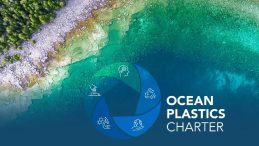Only 9% of plastic waste is recycled each year in Canada. The rest of the plastic used by Canadians (more than 2.6 million tonnes) ends up in a landfill or even as litter in our environment. The Canadian government has been developing a strategy to eliminate single-use plastics (SUPs) since June 2019 when Prime Minister Trudeau announced the government’s intention to ban single-use plastics and hold companies responsible for the plastic waste they create.
On December 21st, 2021, Environment Minister Steven Guilbeault published the Single-Use Plastic Prohibition Regulations describing the upcoming ban on six single-use plastics in Canada. The regulations ban the manufacturing and sale of plastic checkout bags, cutlery, straws, six-pack plastic rings, stir sticks, and plastic takeout containers.
There are several exceptions to the ban, including the ability to sell flexible plastic straws, with a corrugated section that allows the straw to bend, for accessibility purposes. Manufacturers are also able to manufacture and export the banned items to other countries, which is concerning. This exemption has created a loophole for Canadian companies to continue polluting other countries, passing on the responsibility of plastic waste. Plastic pollution is a global crisis. The Canadian government needs to show its commitment to reducing SUPs not only here at home, but around the world.
The plastic products not included on the list of banned items are also worrying. To make significant progress in reducing plastic pollution, action needs to be swift and far-reaching. Banning a list of only six plastic items is not enough to eliminate single-use plastic waste. Missing from the list are items such as plastic water bottles, single-use produce and meat bags, and single-use hot beverage containers. These are single-use items that millions of Canadians use every single day. They end up in landfills across the country, taking hundreds of years to break down and producing millions of microplastics that leach into our waterways.
While the government says that beverage containers haven’t been included in this first phase of regulations because they are easy to recover or recycle, oftentimes that isn’t the case. In Ontario alone, more than 1 billion plastic bottles are landfilled or littered each year. The goal of plastic waste reduction should be to reduce single-use plastics and packaging at the source, which will ultimately reduce the plastics in our landfills and our environment. The action taken must be proactive, and not reactive, to ensure we’re creating long lasting solutions for the future, and protecting the health of our environment.
However, the continued use of throwaway plastics is not only damaging our environment, but also our health. A study written by the University of Newcastle in Australia estimates that people are ingesting up to a credit card’s worth of plastic each week. The study found that the largest source of plastic consumption for humans is through drinking water, both from the tap and from plastic bottles. The impacts of plastic pollution reach into every ecosystem and every area of our lives. The SUPs ban is an opportunity to highlight the areas that require further action and shape the agenda for plastic waste. It’s important we celebrate the first Canada-wide ban on single-use plastics, but continue to shed light on the plastic problems not addressed by the most recent version of the regulations.
The single-use plastic ban is a positive first step in addressing the plastic pollution problem, but more comprehensive and urgent action is required to prevent plastic waste and protect our oceans. Now more than ever is the time for us to band together and ban together– making a commitment to eliminating single-use plastic waste across Canada. For the future of our oceans, this commitment must go beyond the six single-use plastic items presented by the federal government. Items like plastic water bottles, produce wraps and bags, and hot beverage cups all contribute to the plastic pollution problem. These are products that should be banned, as there are readily available alternatives and reusable options for Canadians to turn to instead of plastic.
The Government of Canada will be accepting public comments on the proposed single-use plastic ban regulations until March 2022. As a part of our ongoing mission to help solve plastic pollution, we’ll be submitting a comment to share our thoughts and concerns related to the proposed regulations.
We also strongly encourage you to submit a comment! Plastic Oceans Canada has developed an easy-to-use template for you to share your perspective on the single-use plastic ban with the federal government. Together, we can use our voices to advocate for greater action on plastic waste and create impactful change.
